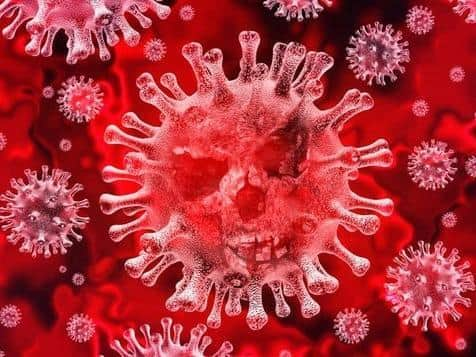Hundreds caught Covid in Herts shops and schools, latest data shows
and live on Freeview channel 276
Shops and schools are among the most common places to pick up the Covid-19 virus in Hertfordshire, according to the latest data.
Latest local contact tracing data – analysed by public health officials – suggests that 289 cases recorded over the past week have been picked up in shops.
Advertisement
Hide AdAdvertisement
Hide AdAnd 296 pupils, students or staff are believed to have picked up the virus while at school, college or university.


Hertfordshire’s director of public health Jim McManus says that – based on national infection levels – every trip to the shops is now likely to include contact with at least one person with the virus.
And Mr McManus says those who have been infected by Covid-19 while shopping have said they may not have properly ‘distanced’ in stores or taken the necessary precautions.
The data was made available on Wednesday, November 4, – just hours before the latest national restrictions were due to come into force.
Advertisement
Hide AdAdvertisement
Hide AdAs part of those restrictions – due to last until December 2 – pubs, restaurants, non-essential shops and leisure facilities are closed.
And all employees are required to work from home wherever possible.
Without the restrictions, Mr McManus says latest modelling suggests the number of Covid-19 deaths in the county could reach a peak of 32 a day in February.
But as a result of the restrictions it’s estimated that the peak daily death rate in the county could reduce to four.
Advertisement
Hide AdAdvertisement
Hide AdIn addition, it is said that that lower peak figure would not be reached until March.
And that would reduce deaths in the county overall – and take pressure away from hospitals.
The modelling estimates that the latest restrictions will reduce infection rates by 40 per cent.
That’s lower than the 70 per cent reduction in infection that is estimated to have resulted from the previous ‘lockdown’ in the Spring.
Advertisement
Hide AdAdvertisement
Hide AdAnd the lower estimate is said to reflect the decision to keep schools and universities open.
Highlighting scientific evidence that pointed to the harm associated with not being in education, Mr McManus said there was a ‘balance’ to be made in whether to keep schools open.
“It is a virus transmitted by respiratory and droplet means – and we will always see young people with a higher level,” said Mr McManus.
“The government has chosen to keep education settings open so we will put everything we can to addressing it and making it as safe as possible.”
Advertisement
Hide AdAdvertisement
Hide AdSupport in place for education settings in Hertfordshire includes a seven day helpdesk and guidance, with support from infection control nurses, environmental health officers and health and safety managers.
And Mr McManus said the support being offered to schools in the county represented £1.2m in staff time and expertise.
Meanwhile executive member for public health and prevention Cllr Tim Hutchings has stressed that – even after four-weeks of further restrictions – the virus is “not going away any time soon”.
He said that even when it had gone there would be a further need to deal with the issues it had created.
Advertisement
Hide AdAdvertisement
Hide AdAnd he stressed the need to continue with the wearing of face coverings, social distancing and hand-washing.
Nationally the rate of infection stands at around 242.9 per 100,000. In Hertfordshire the rate continues to increase but is less than half of the national level at around 116.43 per 100,000.
Data on ‘common exposure’ – shared at a media briefing on Wednesday (November 4) – suggested a pattern across the county where 296 cases over a seven-day period are believed to have been contracted in educational settings, 289 shopping and 124 from pubs or restaurants.
However the exact pattern of ‘common exposure’ does differ between the 10 district and boroughs within the county.